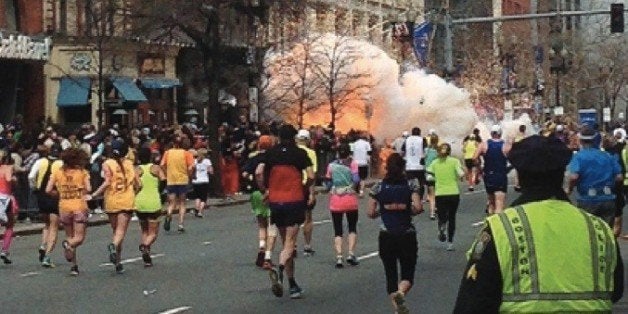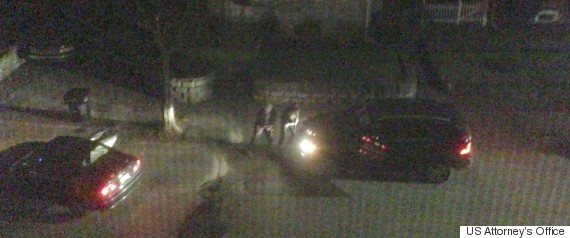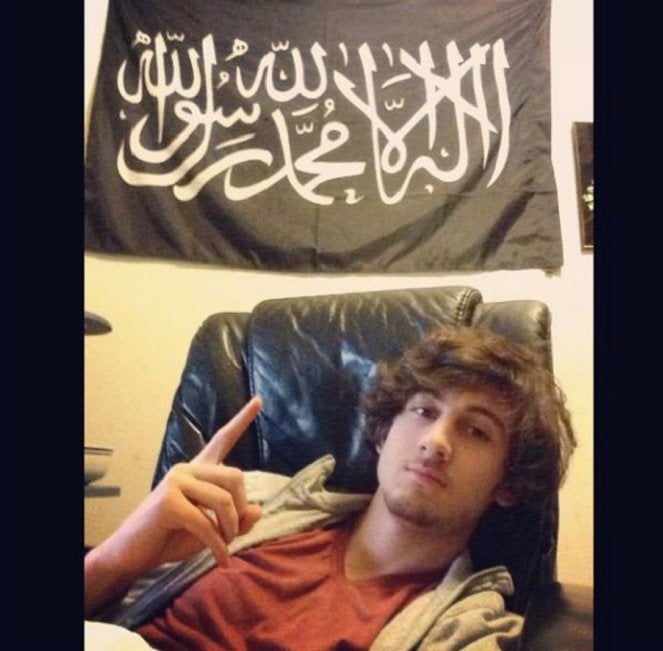
In the mad scramble to catch the Boston Marathon bombers, police created a more dangerous situation by poorly using their weapons.
So says a report released Friday by the Massachusetts Emergency Management Agency, or MEMA. The study was largely complimentary of the response to the bombings two years ago, but found deficiencies with how some officers handled their firearms.
The problems arose in Watertown in the early morning of April 19, as police were in hot pursuit of Tamerlan and Dzhokhar Tsarnaev, the brothers who had detonated two bombs days earlier at the Boston Marathon. The attack killed three people and injured 264. Tamerlan, 26, died after getting shot by police and run over by his younger brother. Dzhokhar, then 19, was captured hours later while hiding in a motorboat parked in a yard.
"Weapons discipline was lacking by the multitude of law enforcement officers in the field during both the firefight with the two suspects near Dexter Avenue and Laurel Streets in Watertown, as well as during the capture of the second suspect who was hiding in a winterized boat in a residential backyard," the report said.

An image showing the firefight between Watertown police and the Tsaranev brothers presented by federal prosecutors in March 2015 during the trial of Dzhokhar Tsarnaev.
"Although initial responding officers practiced appropriate weapons discipline while they were engaged in the firefight with the suspects, additional officers arriving on scene near the conclusion of the firefight fired weapons toward the vicinity of the suspects without necessarily having a target lined up and identified, or having appropriately aimed their weapons," according to the report. "Officers lining both sides of the street also fired upon the second suspect as he fled the scene in a vehicle. Both instances created dangerous crossfire situations."
Thousands of police rushed to Watertown to help, but because many self-deployed, the report said, there was a lack of organization.
"There was confusion about who had overall authority in the field," the review said in one section about areas for improvement. "Many personnel did not recognize command authority from anyone outside their own agency," it also found.
Friendly fire nearly killed Massachusetts Bay Transportation Authority officer Richard Donohue. He was struck by a bullet fired from another cop near where police battled the Tsarnaev brothers in Watertown. A doctor who treated Donohue has said he was "essentially dead" for about 45 minutes before being revived.
In another mistake, an officer shot at two fellow cops in a state police pickup truck because of an erroneous report claiming the Tsarnaevs had hijacked it. Those officers were not hurt in that shooting, which was first reported on by station WCVB in December.
"Contagious fire" erupted when an officer fired without authority on the boat holding Dzhokhar, the report said. Other officers began shooting, thinking that the first shot came from the hiding suspect.

An image of the shootout between Watertown police and Tamerlan and Dzhokhar Tsarnaev on April 19, 2013.
Read the entire 130-page review here.
The ongoing trial of admitted bomber Dzhokhar Tsarnaev delayed the report's release to the public, though its recommendation were distributed to key agencies before the first anniversary of the attack. Attorneys will make closing arguments Monday in Tsarnaev's trial. He has pleaded not guilty to 30 charges, including 17 capital crimes.
"Although the report was publicly released almost two years after the bombings, its findings were shared with key stakeholders prior to the 2014 Boston Marathon, and most of the recommended corrective actions have been or continue to be addressed," MEMA's website says.
On the positive side, the report found that emergency plans for the Boston Marathon performed well amid the chaos of the double bombings near the Boylston Street finish line.
"The all-hazards medical system in place on Marathon Day ensured that the capabilities and capacity to quickly triage and transport the injured from the scene of the incident were immediately available," according to the report. "Although many patients sustained grave injuries, every patient who was transported to area hospitals survived. This can be directly attributed to the rapid triage, transport and treatment these patients received on scene and at hospitals."
 Like Us On Facebook |
Like Us On Facebook |
 Follow Us On Twitter |
Follow Us On Twitter |
![]() Contact The Author
Contact The Author

